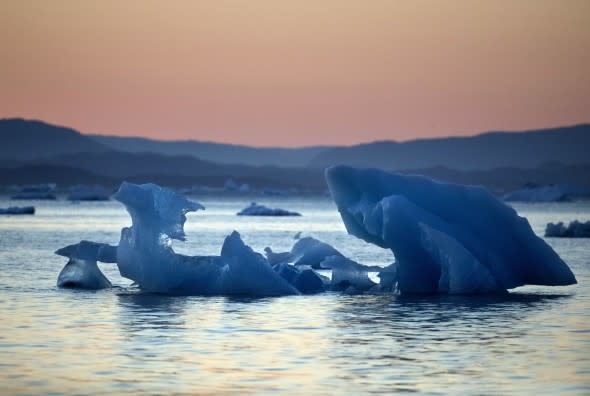2017 shatters global climate records including highest sea levels, hottest year without El Niño
2017 shattered various climate records, including the highest global temperature for a non-El Niño year, lowest Arctic sea ice extent, highest sea levels as well as greenhouse gas concentrations in the atmosphere, according to the American Meteorological Society's 2017 State of the Climate report released on Aug. 1, 2018.
Jeff Rosenfeld, the editor-in-chief of the Bulletin of the American Meteorological Society (AMS), said in a media conference that the report checks up on the same aspects of the planet's climate each year, like a doctor's appointment.
Greenhouse gases were at their highest in 2017, according to a presentation of the report. In a measurement of long-lived greenhouse gases, the global average of carbon dioxide has increased by 2.2 ppm to a total of 405.0 ppm since 2016.

A second measurement observed was the ice in the Arctic. The Arctic ice naturally expands and recedes as the seasons follow their course. The report measures the sea ice at its maximum in March and its minimum in September.
According to the report, the March 2017 sea ice maximum was the lowest on record over the past 36 years.
Paleoclimate records show the patterns of sea ice extent for the past 1,500 years. Usually, the extent has ranged between 9 and 11 million square kilometers. However, between 1800 and 2000, that extent took a dive from above 10 million square kilometers to below 9 million, plunging under that range for the first time in the 1,500-year time span.

The suns sets as an iceberg floats in the Nuup Kangerlua Fjord near Nuuk in southwestern Greenland, Tuesday, Aug. 1, 2017. (AP Photo/David Goldman)
According to the report, ocean heat content was also at a record high, as were global sea levels in 2017. The report lists 2017 as the sixth consecutive year to have the highest global sea level. The American Meteorological Society attributes a third of the higher ocean levels from to the ocean warming and the other two thirds from increasing ocean mass since 2005.
The last three year's warmer ocean waters have contributed to devastating episodes of coral bleaching globally, the report notes.
When comparing data sets, the report places 2017 as the second to third warmest year on record. The rank varies depending on the number of data sets used. So far, 2014-2017 have been some of the warmest years on record.
This past year was also the warmest non-El Niño influenced year on record. El Niño is the warm phase of a routine sea surface temperature pattern in the tropical Pacific Ocean. La Niña is its counterpart as the cold phase.
On top of extreme temperatures, the report highlighted the reoccurring theme of "extreme precipitation." This includes the three major hurricanes: Harvey, Irma and Maria.
